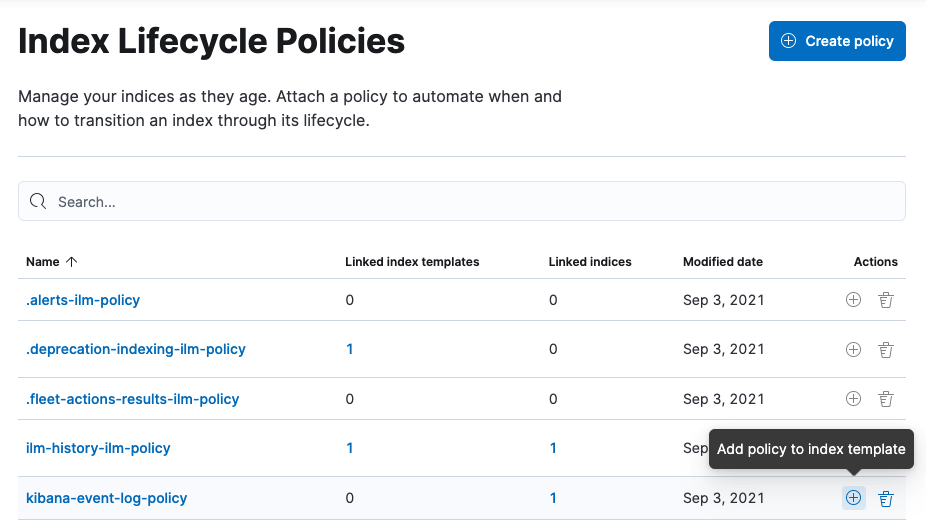IMPORTANT: No additional bug fixes or documentation updates
will be released for this version. For the latest information, see the
current release documentation.
ILM: Manage the index lifecycle
editILM: Manage the index lifecycle
editYou can configure index lifecycle management (ILM) policies to automatically manage indices according to your performance, resiliency, and retention requirements. For example, you could use ILM to:
- Spin up a new index when an index reaches a certain size or number of documents
- Create a new index each day, week, or month and archive previous ones
- Delete stale indices to enforce data retention standards
You can create and manage index lifecycle policies through Kibana Management or the ILM APIs. Default index lifecycle management policies are created automatically when you use Elastic Agent, Beats, or the Logstash Elasticsearch output plugin to send data to the Elastic Stack.

To automatically back up your indices and manage snapshots, use snapshot lifecycle policies.
- Tutorial: Customize built-in policies
- Tutorial: Automate rollover
- Overview
- Concepts
- Configure a lifecycle policy
- Migrate index allocation filters to node roles
- Troubleshooting index lifecycle management errors
- Start and stop index lifecycle management
- Manage existing indices
- Skip rollover
- Restore a managed data stream or index
- Index lifecycle management APIs
- Index lifecycle actions